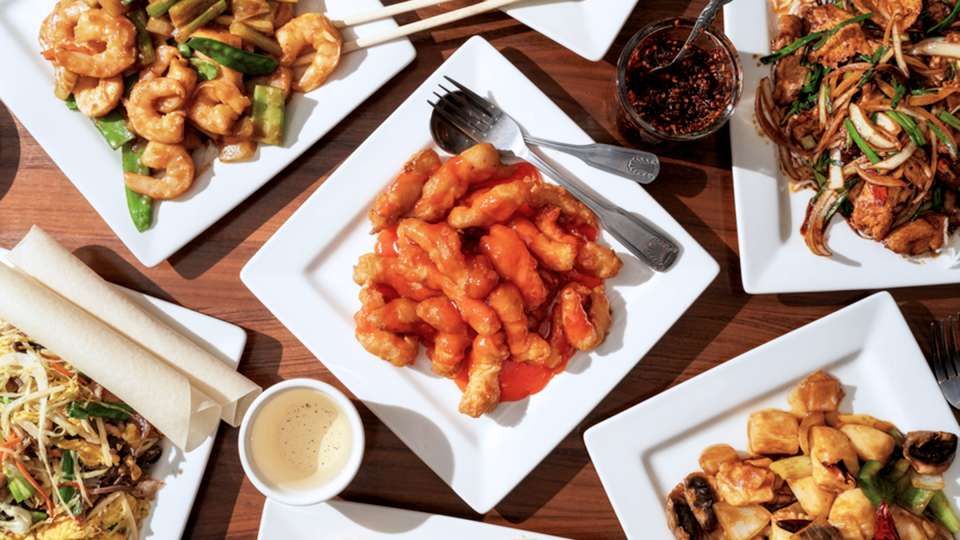
For decades, MSG, or monosodium glutamate, has been villainized and made to seem unhealthy. You’ve probably seen food products or restaurants advertise their foods as containing “No MSG” or maybe you think MSG bothers your stomach or causes headaches.
It may be surprising, then, to learn the truth: MSG isn’t harmful or unhealthy, and can in fact be part of a healthy, balanced diet. So why do so many people shun it? The answer is rooted in anti-Asian racism.
What is MSG, really?
In the early 1900s, Japanese professor Kikunae Ikeda extracted MSG from seaweed broth. He was searching for a substance that would enhance savory or “umami” flavors, one of five types of flavors humans can taste. (The others are sweet, sour, salty and bitter.)
Along with occurring in seaweed broth, MSG naturally occurs in other foods we regularly eat, such as tomatoes, parmesan cheese and mushrooms. MSG is produced through a fermentation process, similar to how yogurt, vinegar, beer and wine are made.
“Scientifically speaking, monosodium glutamate (MSG) is the salt form of the amino acid glutamic acid, also called glutamate. Glutamate is an amino acid that our bodies make; it naturally occurs in many foods and can be made into a pure crystallized powder to use as a seasoning in cooking. The human body treats glutamate in the same way whether coming from tomatoes or MSG ‘seasoning,’” says Amanda Li, a registered dietitian nutritionist at UW Medical Center – Montlake.
The compound is a popular seasoning in many Chinese and other East Asian dishes, as well as many kinds of canned, fermented and processed foods.
How racism made MSG the bad guy
When MSG was first discovered, the U.S. was actively restricting how many Chinese immigrants came here. The Chinese Exclusion Act, passed in 1882, was extended several times until its repeal in 1943. Anti-Chinese racism was rampant, largely in response to Chinese workers being hired for laborer jobs because they were willing to work for less than fair pay.
This was the legacy and backdrop to which a 1968 letter to the New England Journal of Medicine describing sickness after eating MSG spurred an anti-MSG movement. Symptoms such as numbness, weakness and a hard, fast heartbeat were associated with MSG in what came to be called “Chinese restaurant syndrome” and is now termed “MSG symptom complex.”
Subsequent research on MSG included poorly designed studies that used unrealistic dosages of MSG, only furthering the harmful myths around the seasoning.
“These studies used doses five to 30 times what would be considered a normal amount and used delivery methods such as tubes going directly into the stomach or via injections instead of a normal route by mouth with food,” Li explains.
Since then, several high-quality studies have called into question the validity of these results, such as this systematic review article from 2017. Unfortunately, that hasn’t been enough to counter the erroneous early representation of MSG.
Is MSG safe?
The short and long answers are both yes. MSG is a naturally occurring substance that is safe to eat, found naturally in many foods already and can be used as a seasoning to elevate the flavor of food. The safety of MSG has been studied extensively by several organizations. It is FDA-approved and safe for all people including children and pregnant people.
Safety of food additives is determined by the Joint FAO/WHO Expert Committee on Food Additives, which notes the acceptable daily intake (ADI) of food additives. MSG is listed as “ADI not specified” along with other additives that pose no health risk, Li explains.
Essentially, this means that you don’t need to limit your intake as long as you’re consuming MSG as part of a normal diet and not, say, eating it by the spoonful.
As for people who think MSG bothers them? MSG probably isn’t the real cause. Li references a double-blind, placebo-controlled study from 2000 that failed to consistently elicit reactions with ‘sensitive’ individuals using MSG or placebo.
If you think MSG bothers you, ask yourself if you have direct evidence that that is the case — or if it’s possible negative attitudes around MSG have tinged your own perspective of it.
How to use MSG in your home cooking
Try adding MSG seasoning to a dish to enhance its existing flavor. Li likes to add it to soups, stews, roasted and grilled vegetables and egg-centric dishes.
Li says not to use MSG as a salt substitute. Instead, use it in combination with salt to season your food — such as a mixture of half MSG, half salt.
MSG contains one-third the amount of sodium compared to salt. For reference, one teaspoon of MSG contains 480 mg of sodium whereas a teaspoon of salt contains 2,300 mg — the max daily recommended intake according to the American Heart Association.
“If you have hypertension or are looking to decrease your sodium intake, you can use MSG seasoning as a tool to lower your overall sodium consumption. You can decrease the sodium content of your home-cooked meals without compromising flavor,” Li says.
Li asks that you join her in her efforts to educate others and dispel racist and xenophobic views on MSG and Asian culture.

 Healthy ideas for your inbox
Healthy ideas for your inbox





